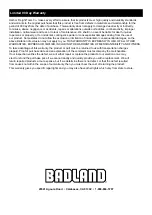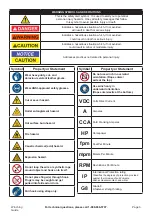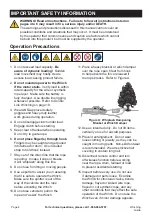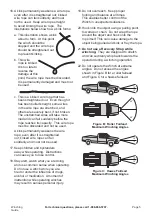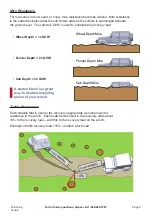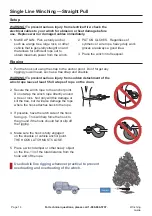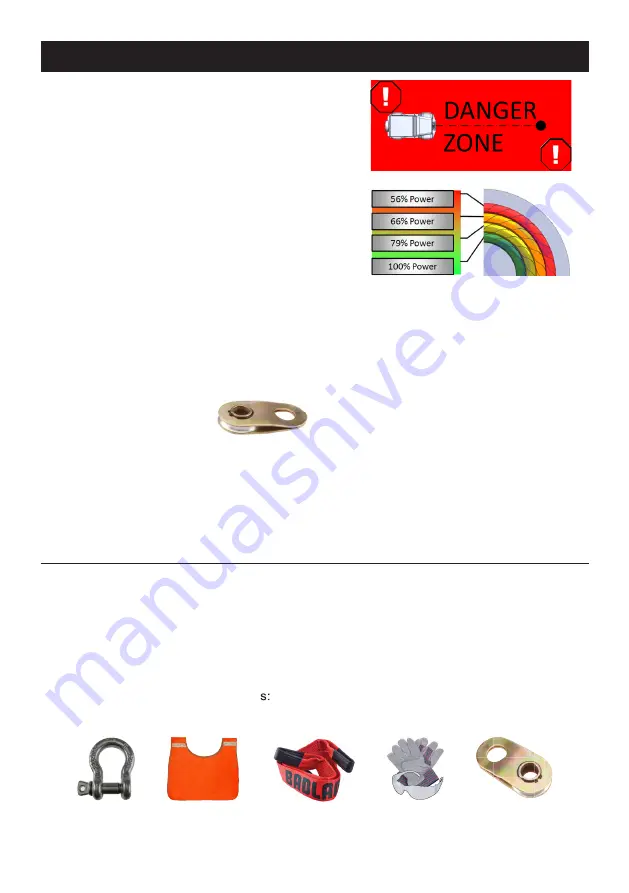
Page 7
For technical questions, please call 1-888-866-5797.
Winching
Guide
Basic Winching Tips
• ESTABLISH A DANGER ZONE:
$WOHDVWIWRQHDFKVLGHRIWKHZLQFKOLQHDQG
EH\RQGWKHYHKLFOHDQGDQFKRUSRLQW0DNHVXUH
no people enter during the winching operation or
when the line is under tension.
• FIRST LAYER WINCHING:
Winch with the most rope out possible to
utilize the maximum power of the winch and
prevent overloading and overheating.
• WINCH RECOVERIES ARE SLOW:
7DNHWLPHWRSURSHUO\HYDOXDWH
WKHVLWXDWLRQDQGWDNHDOOVDIHW\
precautions. The loads that the
winch can generate are extreme.
• USE A SNATCH BLOCK:
When in doubt of the
recovery load or if the two
YHKLFOHVDUHZLWKLQIWRI
each other, use a snatch
EORFNIRUDGRXEOHOLQHSXOO
• KEEP VEHICLE RUNNING:
The winch will place an enormous amount
of strain on the vehicle electrical system.
Keeping the engine at 2000 RPM can
provide some help from the alternator.
• KEEP THE VEHICLE IN NEUTRAL:
7KHSDUNLQJEUDNHLVQRWGHVLJQHGWR
hold the loads that the winch can apply.
,IUHFRYHULQJDQRWKHUYHKLFOHNHHS
IRRWILUPO\RQEUDNH)RUVHOIUHFRYHU\
carefully steer vehicle to avoid obstacles
DQGVSRWWHUDQGNHHSIRRWRIIEUDNH
• KEEP THE LINE STRAIGHT:
Winch with the rope as straight as possible to the
ZLQFKLQJYHKLFOH8VHDVQDWFKEORFNLIQHHGHG
Before You Go
1.
&KHFNWKHSRZHUFDEOHVIURPWKHEDWWHU\
to the winch for abrasion and heat
damage. Replace if worn or damaged.
2. The winch is an intermittently used
SURGXFW²RYHUWLPHWKHJUHDVHPD\VHWWOH
LQWKHJHDUWUDLQDQGPDNHLWGLIILFXOWWR
IUHHVSRRO%HIRUHDWULSFKHFNWKHZLQFK
for proper operation in three mode
•
3RZHU,1
•
3RZHU287
•
)UHHVSRRO
2. Inspect the rope for signs of abrasion
GDPDJHNQRWVRUNLQNVRUFRPSUHVVLRQ
damage. Replace if damaged. See
Rope
Inspection
on page 13 for more detail.
3. Ensure you have basic rigging
KDUGZDUHDQGVDIHW\JHDUVXFKDV
VKDFNOHVZLQFKOLQHGDPSHUWUHHVWUDS
safety glasses, and gloves. A snatch
EORFNLVKLJKO\UHFRPPHQGHG
6KDFNOH
Damper
Tree Strap
Safety Gear
6QDWFK%ORFN








